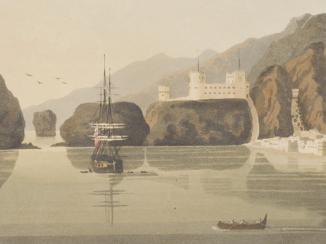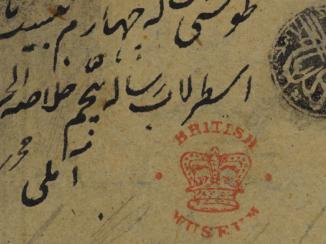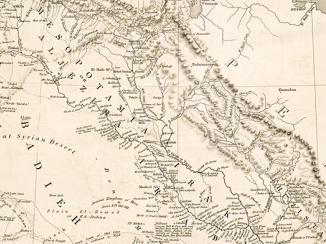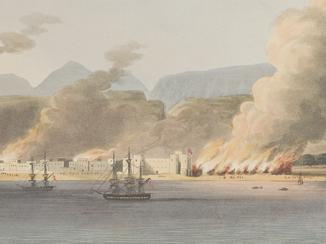Overview
Countering Napoleon
The East India Company (EIC) began trading in Basra in the seventeenth century, and eventually established a residency An office of the East India Company and, later, of the British Raj, established in the provinces and regions considered part of, or under the influence of, British India. there. At this time, Basra formed part of the Pashalik of Baghdad. Though part of the Ottoman Empire, it was governed by the semi-independent Georgian Mamluk Dynasty. The ruler, who held the title of Pasha An Ottoman title used after the names of certain provincial governors, high-ranking officials and military commanders. , governed from the city of Baghdad, and so the EIC felt it necessary to have representation there as well. During the eighteenth century, this need was fulfilled for the most part by networks of well-established Armenian merchants, who cooperated with the EIC.
In 1798, however, this representation was upgraded, and Sir Harford Jones-Brydges was appointed as the first Resident in Baghdad. This came in response to France’s invasion of Egypt that same year, and British fears that Napoleon’s ultimate target was India. French officers and agents were appearing in Baghdad as part of a wider strategy to build alliances with local rulers across the Middle East and Asia. The Resident in Baghdad was therefore to gather intelligence and seek to counter French influence in the region.
Another role the Residency An office of the East India Company and, later, of the British Raj, established in the provinces and regions considered part of, or under the influence of, British India. immediately took on was ensuring the safe passage of mail between Britain and India. An existing route went first by sea from India and up the Gulf to Basra. From here, it was taken overland via Aleppo to Constantinople [Istanbul], and onwards through Europe. A slightly altered route was now trialled, with mail taken from Basra to Baghdad before being transported to Constantinople. British officials hoped that this adjusted route would be both quicker and safer, and the new Residency An office of the East India Company and, later, of the British Raj, established in the provinces and regions considered part of, or under the influence of, British India. was responsible for overseeing it.
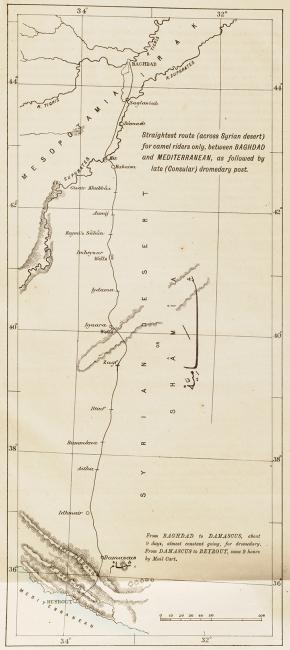
Baghdad and the Great Game
With the failure of Napoleon’s invasion of Egypt and Syria, the purpose of the Baghdad Residency An office of the East India Company and, later, of the British Raj, established in the provinces and regions considered part of, or under the influence of, British India. became less clear. However, there remained enough British interest in the region, or at least fear of other countries’ interests, for the Residency An office of the East India Company and, later, of the British Raj, established in the provinces and regions considered part of, or under the influence of, British India. to remain in place. Though Britain remained concerned about French imperial ambitions, what occupied them more was Russian expansion into the southern Caucasus, and the potential threat this posed to north-western Persia and north-eastern Turkey. This fed into the broader rivalry that now developed between Britain and Russia for influence in Asia, known as the ‘Great Game’.
As well as being the EIC Resident, Harford Jones and his successors also held the rank of British Consul in Baghdad, reporting to the British Ambassador to Constantinople. This reflected how the Residency An office of the East India Company and, later, of the British Raj, established in the provinces and regions considered part of, or under the influence of, British India. linked together various strands of British imperial engagement. As well as representing the EIC’s trading interests at the top of the Gulf, the Resident was also concerned with British relations with this easternmost province of Ottoman rule, and sought to assess the impact of events here on British interests in the wider region.
For example, in 1816 the position of Sa‘id Pasha An Ottoman title used after the names of certain provincial governors, high-ranking officials and military commanders. in Baghdad was rapidly weakening, and the Resident, Claudius Rich, tried to predict the effects of his imminent downfall. In his reports from this time, Rich expresses particular concern that the instability caused would damage relations between the Ottoman Empire and Persia, and that Russia might look to benefit from that deterioration. Baghdad, therefore, was seen to occupy a strategically important position, and the Resident sought to remain abreast of any changes that could shift the local balance of power.
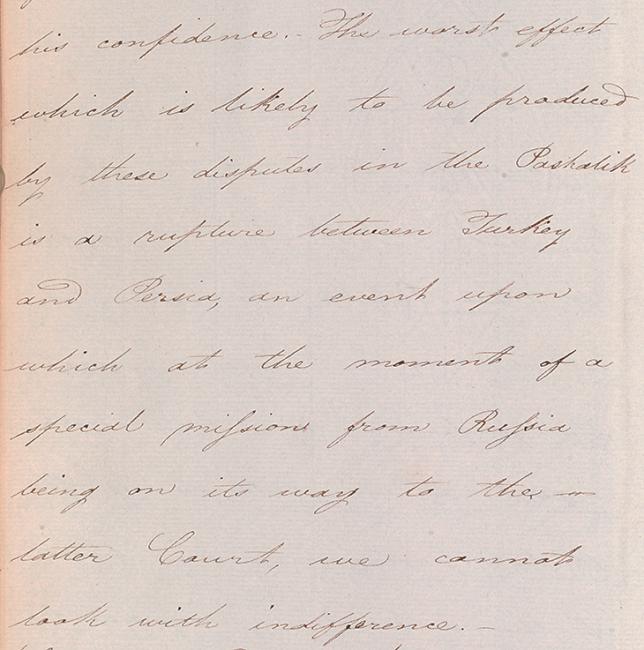
The Ottoman Empire and the future of Iraq
In 1810, the Baghdad Residency An office of the East India Company and, later, of the British Raj, established in the provinces and regions considered part of, or under the influence of, British India. was joined with the Residency An office of the East India Company and, later, of the British Raj, established in the provinces and regions considered part of, or under the influence of, British India. in Basra, and in 1812 the combined administration was renamed the Political Agency An office of the East India Company and, later, of the British Raj, headed by an agent. in Turkish Arabia A term used by the British officials to describe the territory roughly corresponding to, but not coextensive with, modern-day Iraq under the control of the Ottoman Empire. . The Political Agent A mid-ranking political representative (equivalent to a Consul) from the diplomatic corps of the Government of India or one of its subordinate provincial governments, in charge of a Political Agency. , apart from for a few years during the 1820s, was based at the Baghdad Residency An office of the East India Company and, later, of the British Raj, established in the provinces and regions considered part of, or under the influence of, British India. , with an assistant in Basra. In 1818, the Residency An office of the East India Company and, later, of the British Raj, established in the provinces and regions considered part of, or under the influence of, British India. was moved to a large building on the east bank of the Tigris, where it would remain until 1904.
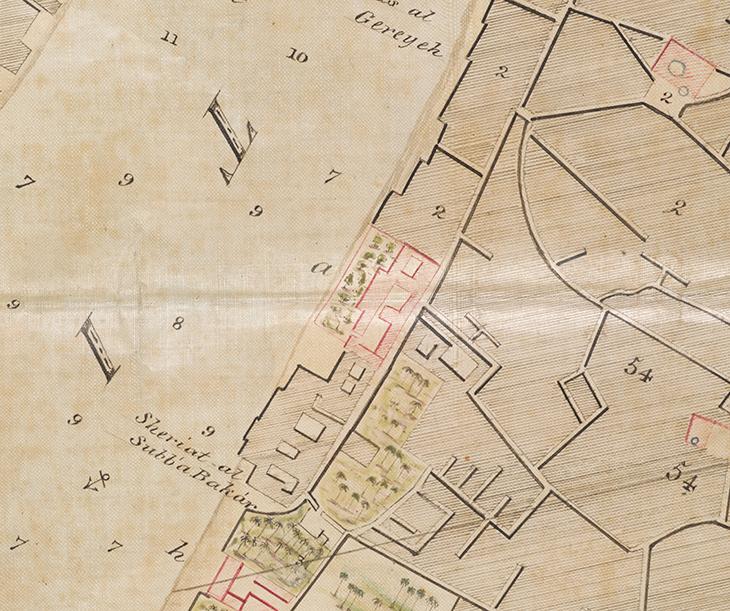
‘Turkish Arabia’ was the name British officials used to refer to Ottoman-controlled Iraq. One of the Baghdad Residency’s aims was to use its influence to promote stability and prevent any erosion of Ottoman authority. The Residency An office of the East India Company and, later, of the British Raj, established in the provinces and regions considered part of, or under the influence of, British India. saw this as an important means of keeping in check the ambitions of other imperial powers, particularly France and Russia. Simultaneously, however, the Residency An office of the East India Company and, later, of the British Raj, established in the provinces and regions considered part of, or under the influence of, British India. anticipated an approaching end to Ottoman rule in Baghdad, and sought to deepen British influence in preparation for this. To do so, it had to find ways of increasing British involvement without provoking a response from other interested powers.
One way these two aims were pursued was through the promotion of steam navigation on the Euphrates and Tigris rivers. Following a survey expedition from 1835-37, a government steamer was employed to operate between Basra and Baghdad. These services were expanded after 1861 with the establishment, by British merchants and with government subsidy, of the Euphrates and Tigris Steam Navigation Company. Britain hoped that this would promote more trade, encourage development along the course of the rivers, and improve relations with the local tribes. Though these aims were only partially realised, overall the establishment of steamship services served to create a more visible and far-reaching British presence in the region.
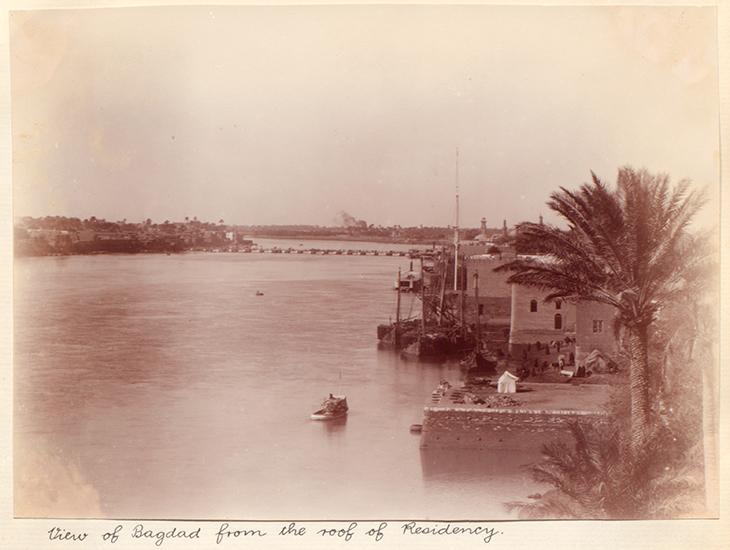
Most accounts of the British involvement in Baghdad begin with its seizure from the Ottoman Empire during World War I. However, the ground had been laid for this much earlier. Throughout the nineteenth century, the British Residency An office of the East India Company and, later, of the British Raj, established in the provinces and regions considered part of, or under the influence of, British India. in Baghdad had successfully held its rivals at bay and slowly expanded the scope of British influence in the region, at the same time building a detailed knowledge of the land and its peoples through surveys and exploratory journeys.
Scholarly legacies
An additional legacy of the Baghdad Residency An office of the East India Company and, later, of the British Raj, established in the provinces and regions considered part of, or under the influence of, British India. was its contribution to British knowledge about the history of the region. A series of Residents, including Claudius Rich (served 1808-1821), Robert Taylor (1821-1843), and Henry Rawlinson (1843-1856), travelled around the wider area and conducted historical and archaeological research. They also collected large numbers of books and manuscripts which later became part of the collections of the British Library, and some of which can be viewed on the QDL.





